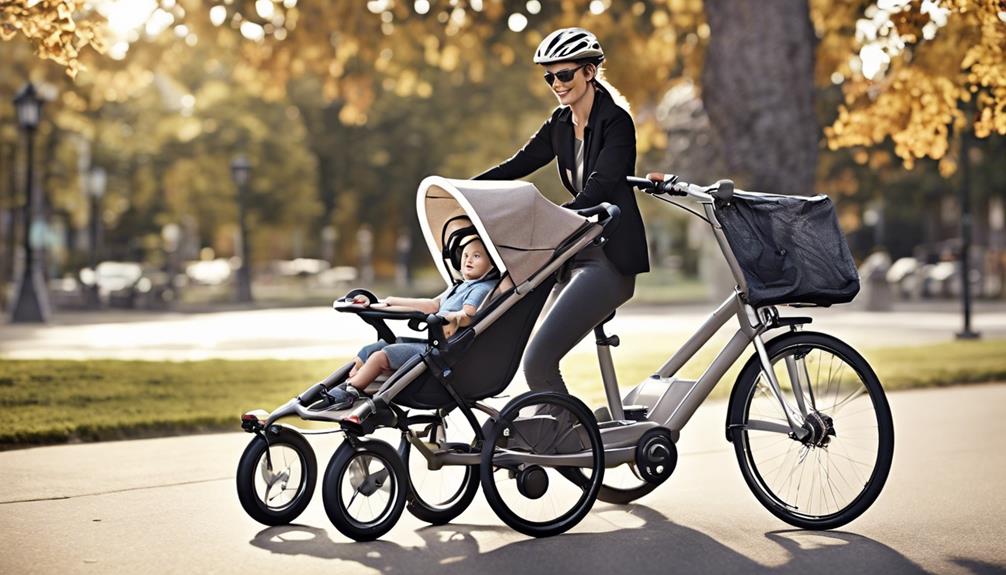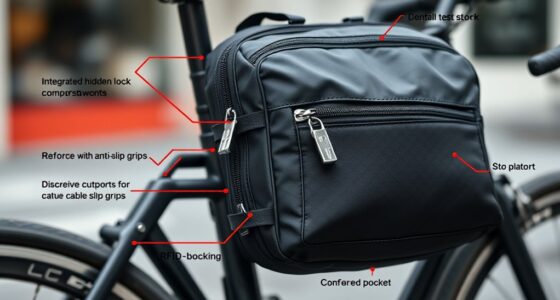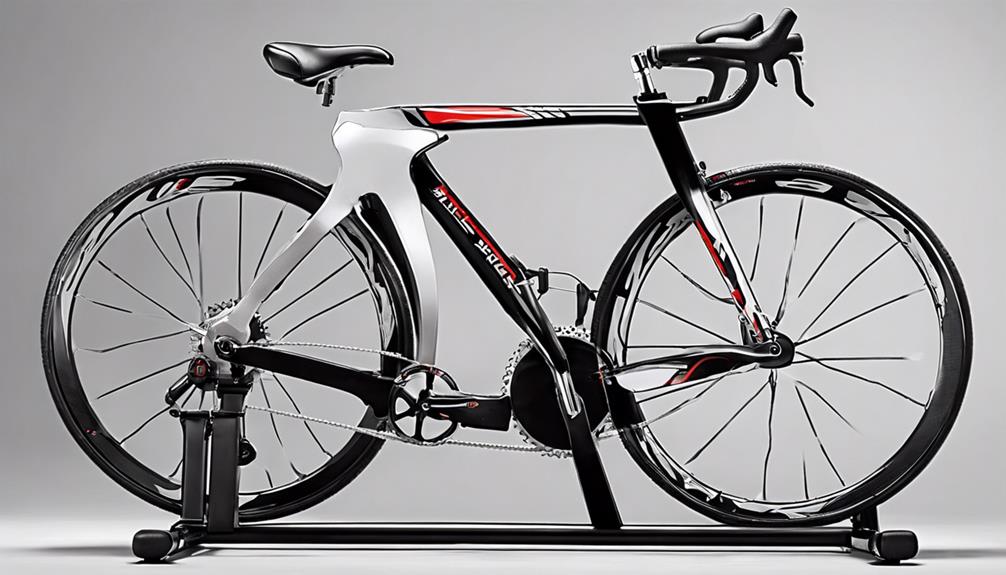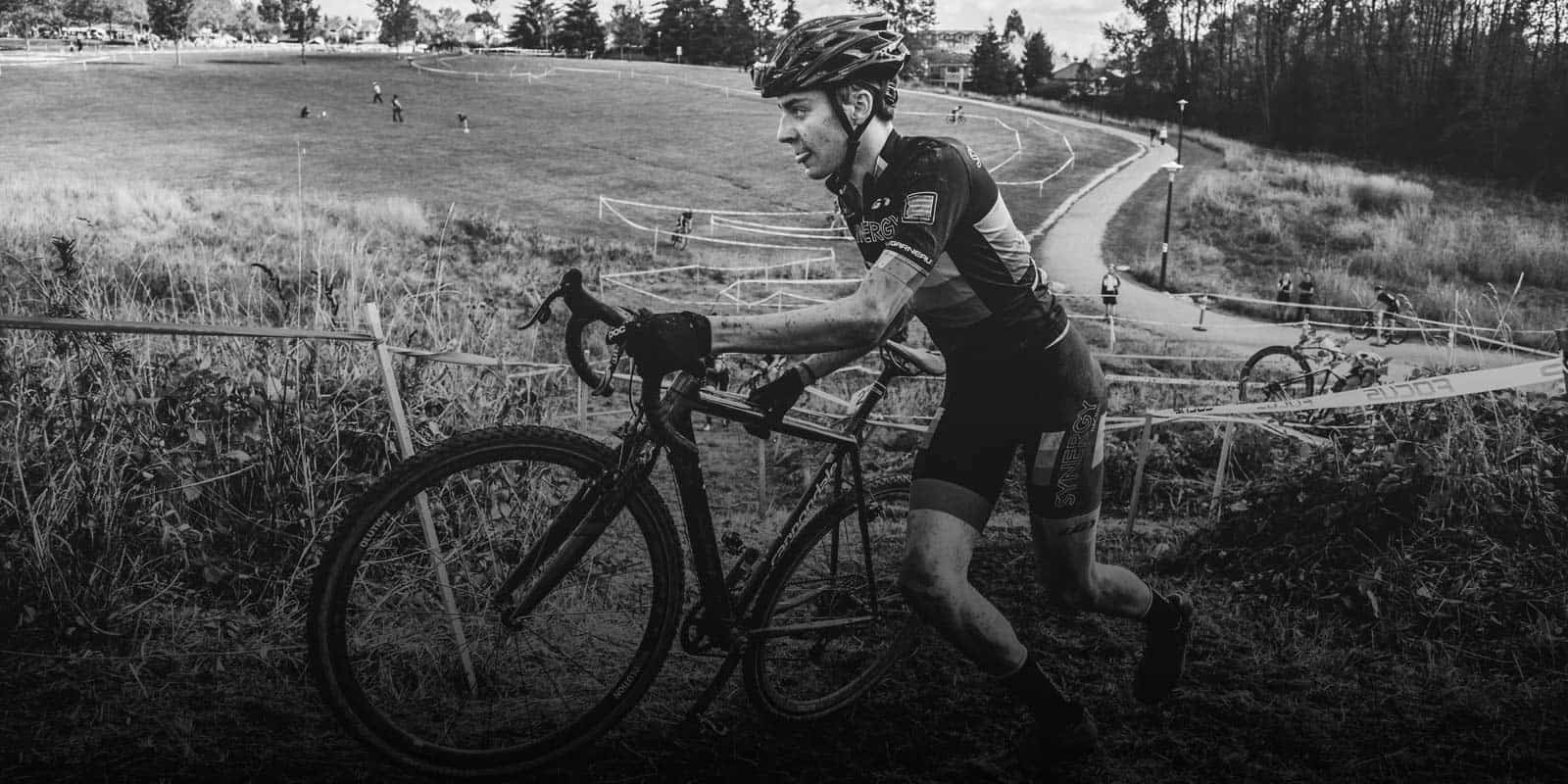7 Ways To Build A Beach Body Fast
Summer is on its way, and it’s the perfect opportunity to prep for your beach-ready figure! With some easy tips, you can swiftly change your body shape.

Here, I’m going to give you seven easy methods that will help you build a healthier, toned body fast. From cardio habits to diet regulation and everything in between, I’ll show you how to achieve the body of your dreams before summer hits!
So let’s get started!
Cardio Habits
Incorporating regular cardio into your routine can help you get the results you want in no time! HIIT, or High Intensity Interval Training, is a great way to burn fat quickly and efficiently. It includes short bursts of intense activity followed by brief recovery periods, helping you to maximize your calorie burn in less time.
Additionally, interval training helps improve cardiovascular endurance and muscle strength. When performing HIIT exercises, staying hydrated is important so your body can regulate its temperature and perform optimally.
Cardio is not limited to just HIIT though; any form of aerobic exercise will help you build a beach body fast. Whether it’s running, swimming, or spinning – longer duration exercises at lower intensities are great for burning calories and improving overall health. The key here is consistency: set a schedule that works for you and stick with it!
Strength training should also be part of your workout plan if you want to see lasting results from your beach body goals. Building lean muscles helps increase metabolism, which aids in fat loss even when resting. It’s also helpful for developing better posture and improving balance. To get started on the right track with strength training, focus on exercises that engage multiple muscle groups at once, such as squats or lunges. This will help target more muscles while reducing the risk of injury due to overtraining one area of the body.
Transitioning into strength training is an important step towards achieving a balanced workout program that will lead to long-term success in reaching your beach body goals.
Strength Training
Lifting weights and pushing your muscles to the max will help sculpt a toned physique in no time. Strength training is one of the most effective ways to build muscle, and all it requires is a set of dumbbells and some dedication.
You can start with simple exercises such as bicep curls, shoulder presses, squats, and lunges. Aim for three sets of 12-15 repetitions per exercise while focusing on proper form and technique. Make sure you hit all major muscle groups including chest, shoulders, back, glutes, legs, biceps and triceps.
By incorporating strength training into your workout routine two to three times per week, you’ll begin to see results fast! Not only will lifting weights help tone your body but also improve balance retention and posture. With consistent practice comes progress, so don’t be discouraged if at first, you feel like you’re not making any headway—the benefits will come with time!

If you want to build a beach body quickly, then make sure strength training is part of your regular exercise regimen; it’s an essential component for sculpting lean muscle mass that will have heads turning when summer rolls around.
Moving onto body-sculpting protein…
Body-Sculpting Protein
Getting enough protein in your diet is key for sculpting a toned physique quickly, so don’t skimp on those steaks! Protein helps increase muscle mass and can be found in many food sources such as lean meat, fish, dairy, beans, nuts, and seeds.
Protein also helps to build and repair muscle fibers after workouts which is why it’s important to have an adequate amount of protein intake when trying to reach beach body goals. Ensuring you get the right amount of sleep is essential too as that’s when your muscles recover.
In order to make sure you’re getting enough protein into your daily diet, it’s important to plan ahead. Meal prepping or stocking up on ready-made snacks like hard-boiled eggs or energy bars are great ways to keep your protein levels high even when you’re on the go. It’s also beneficial to incorporate more plant-based proteins like tofu and tempeh into your meals if possible.
When strength training, it’s important not only to do the exercises correctly but also to lower yourself back down slowly in order for the muscles to engage properly with each rep. This will help build strength faster while helping sculpt a beach body quicker than expected!
Combined with a well-balanced diet full of wholesome ingredients and plenty of restful sleep, reaching your goals should be achievable within no time at all! With these tips, regulating your diet should become easier as you move closer towards achieving that perfect beach body look.
Diet Regulation
Regulating your diet doesn’t have to be difficult–you can easily reach your goals by prepping meals and stocking up on snacks! Eating healthy foods like whole grains, leafy greens, lean proteins, and fruits can help you lose weight and keep it off in the long term.
Meal prepping is a great way to ensure that you are eating nutritious meals throughout the week, as you will always have something quick and easy when hunger strikes. It also helps prevent overeating or bingeing on unhealthy snacks late at night when cravings kick in.
Stocking up on healthy snacks such as nuts, seeds, low-fat yogurt, apples with nut butter, celery with hummus dip or air-popped popcorn will also help regulate your diet and provide essential vitamins and minerals throughout the day.
Eating lots of fresh fruits and vegetables is key for balanced nutrition which will aid in keeping energy levels high while helping to keep those extra pounds off.
Making sure to get enough restful sleep each night is another important factor for achieving weight loss goals through diet regulation. Regular physical activity coupled with a well-balanced diet will allow you to stay motivated while feeling energized throughout the day so that you can take on whatever life throws at you with confidence!
With the right mindset and planning ahead of time by prepping meals and stocking up on healthy snacks, regulating your diet doesn’t have to feel overwhelming or tedious.
Right Mindset
Having the right mindset can be just as important as prepping meals and stocking up on snacks when it comes to regulating your diet and reaching your goals. It’s so easy to say “I’m going to lose weight,” but having a plan that outlines what steps you’ll take in order to achieve that goal makes all the difference.
A realistic workout plan, eating the right foods, and drinking plenty of water are all great ways to begin setting yourself up for success. Following an interval training schedule can also help increase metabolism, allowing the body to burn more fat even after a workout session has finished.

One of the most difficult things about any diet or fitness program is staying motivated throughout – this is where having a positive attitude really pays off. Making sure you stay focused on your end-goal can make it easier to stick with whatever changes you decide to make in your lifestyle.
Additionally, remember that there are small victories along the way; don’t forget to celebrate them! When you see results from your hard work, it’ll only motivate you further for continued progress towards reaching your beach body goals.
Staying disciplined and consistent with healthy habits is key for successful weight loss and building muscle tone. It’s also important not to become overwhelmed by trying too much at once. Instead of starting out by cutting calories drastically or doing very intense workouts five days a week, focus on taking smaller steps such as gradually increasing physical activity each day while maintaining sensible portion sizes at mealtimes.
This will give you time to adjust without feeling overwhelmed or discouraged if progress isn’t immediate. From here, transitioning into interval training will give an extra boost in achieving desired results faster than ever before!
Interval Training
Interval training can be an effective tool to help you reach your goals quickly and efficiently, without sacrificing the quality of your progress. It’s a great way to alternate between high intensity cardio and low intensity rest periods. This type of workout helps you burn more calories than traditional cardio exercises while still allowing for adequate recovery time in between sets.
Here are some ways interval training can help you build a beach body fast:
- Higher calorie burn – Interval training increases your heart rate so that you can burn more calories during each workout session.
- Improved cardiovascular endurance – Interval exercises push your body to its limits, enabling it to become better at handling strenuous activities.
- Increased muscle strength – High intensity intervals require additional force from your muscles which leads to strengthened muscles over time.
- Balanced diet – Eating dark leafy greens and other nutrient-rich foods will provide the fuel needed to sustain intense workouts and promote healthy weight loss.
Interval training is an excellent choice for those looking to lose weight and increase their fitness level quickly. By switching up the duration and intensity of each interval, you can tailor your workouts specifically for what works best for you and make sure that every exercise is challenging yet manageable.
With consistent commitment, interval training can give you the results needed for achieving the beach body look that you desire!
HIIT
With HIIT, you can experience incredible results in a relatively short period of time. Take for example, Maria who lost 16 pounds and 4 inches off her waist within just 6 weeks of HIIT training. HIIT stands for High Intensity Interval Training and is a type of cardio that consists of short bursts of intense activity alternated with periods of rest or recovery. This method allows you to burn fat faster by keeping your heart rate up while still taking breaks throughout the workout.
The benefits of HIIT are numerous; it not only helps you lose weight but also increases your body’s metabolic rate which means you will continue to burn calories even after the workout has ended. Additionally, HIIT exercises target both large muscle groups and small muscles so it can help tone your glutes as well as other parts of your body like your arms and abs.
Lastly, because the intensity level is higher with HIIT than with traditional cardio workouts, there is less risk for injury since all movements are done at a safe pace with proper form. Furthermore, due to its flexibility in terms of duration and movement types included in one session, it can be customized to fit any fitness level making it great for anyone looking to tone up quickly without having to spend hours at the gym every day.
| Benefits | Drawbacks |
|---|---|
| Lose Weight | Risk For Injury |
| Increase Metabolism | Higher Intensity Level |
| Target Large & Small Muscle Groups | Flexible Fitness Levels |
| Increase Endurance | Time-consuming |
Tone Glutes
HIIT is an effective way to tone your glutes quickly and efficiently, without needing to dedicate large amounts of time to the gym.
To get that beach body you’ve been dreaming of, you’ll want to work on toning your glutes. Squats are one of the best exercises for toning your glutes. Lunges with a twist are another great exercise for targeting those booty muscles. Step-ups will help increase flexibility and strength in your lower body. Deadlifts are also a fantastic workout for building up the glute muscles.
The combination of these exercises is sure to give you the body of your dreams fast! Remember that consistency is key when it comes to getting fit quickly – make sure that you’re doing these exercises at least three times a week.
With commitment and dedication, you’ll be rockin’ a bikini physique in no time!
Bikini Physique
Now, my glutes are toned enough to move onto the next step: creating a bikini physique. If you’re looking to get a beach body for the summer, this is an essential component.
Achieving the perfect bikini physique requires one to focus on their entire body, not just one area. To make sure that your body weight is balanced and in proportion with each other, it’s important to incorporate whole-body exercises like squats, lunges and pushups into your daily routine. This will also help build strength and endurance which can further enhance your overall look!
Additionally, while eating healthy is key for any fitness goal, making sure that you eat clean foods that are low in fat and sugar can help you achieve a summer body quickly.

Lastly, don’t forget about incorporating plenty of water into your diet! Staying hydrated helps flush out toxins from your system while keeping you energized throughout the day — both of which are beneficial when trying to create a sexy shape for a bikini look! Plus, drinking water before meals helps reduce hunger pains and cravings which could lead to unhealthy snacking or overeating.
With these simple tips combined with regular exercise, you’ll be well on your way toward getting the perfect beach body for this summer season!
Plenty of Water
Hydration is key for achieving the perfect bikini physique – don’t forget to drink plenty of water! Water consumption plays an important role in weight loss and maintaining a healthy lifestyle. Drinking plenty of water helps flush out toxins, reduce calories, and keep your metabolism running efficiently.
It also helps you stay energized during intense cardio workouts which are essential for losing weight quickly. Make sure to drink at least 8 glasses of water daily to ensure your body is properly hydrated and functioning optimally.

In addition to drinking plenty of water, it’s important to make sure you’re eating nutritious foods that provide your body with the essential nutrients and minerals needed for optimal health and fitness. Eating fresh fruits and vegetables, lean proteins, whole grains, legumes, nuts, and seeds will help fuel your body so you can reach your beach body goals faster while still being healthy.
Making small changes in your diet like increasing the amount of water you drink can have a big impact on how quickly you reach those beach body goals. Incorporating plenty of water into your daily routine along with regular exercise will help give you the bikini physique you desire in no time!
Frequently Asked Questions
How often should I exercise in order to achieve a beach body?
In order to achieve a beach body, it’s important to stick to a regular exercise routine. I recommend working out at least four times a week for 30-45 minutes each session.
This could include strength training, cardio, and yoga exercises that are designed to target the major muscle groups. Make sure you’re taking rest days in between workouts so your muscles can recover and repair.
When combined with proper nutrition, this level of exercise is sure to help you reach your fitness goals quickly and safely.
What are the best exercises to target areas of my body I want to tone?
I’m looking for the best exercises to target specific areas of my body and get a toned beach body.
The journey to achieve a beach body can be an exciting one if you have the right knowledge and motivation.
From squats to planks, there are so many effective workouts that will help me reach my goals.
I’ll focus on building strength with compound movements that work multiple muscle groups at once, such as deadlifts, chest presses, and pull-ups.
Cardio exercise like running or swimming is also important in helping me slim down quickly and build endurance.
With consistent effort and dedication, I’m sure I’ll be able to sculpt the perfect beach body in no time!
Can I achieve a beach body without following a strict diet?
Yes, it’s possible to achieve a beach body without following a strict diet.
While having healthy eating habits such as avoiding processed foods and limiting sugar intake can help you feel better overall and make it easier to lose weight, there are exercises that can also help tone your body.
High intensity interval training (HIIT) workouts are an effective way to burn fat quickly while also building muscle.
Additionally, strength-training exercises like squats and lunges will help build lean muscle in targeted areas of your body.
Remember, consistency is key – so be sure to stick with the plan for best results!
How quickly can I expect to see results?
If you’re looking to build a beach body quickly, it’s important to understand that the timeline for achieving results will depend largely on your starting point.
While some people may see noticeable changes after just one or two weeks of intense exercise and healthy eating, for others it could take several months.
That said, by consistently following a workout routine and making healthy dietary choices, you can expect to start seeing progress within a few weeks.
Are there any supplements that can help me achieve my beach body goals?
I was just walking along the beach, enjoying the sun and sand when I noticed something that made me pause.
Everyone around me had a toned and fit body, like they were all on their way to building a beach body fast!
I started wondering if there were any supplements that could help speed up my progress.
After researching online, I found out that while diet and exercise are essential components of a successful beach body routine, certain supplements can provide additional support in achieving those goals.
Protein powder, BCAA’s (branched chain amino acids) and multivitamins are great options for anyone looking for an extra boost on their fitness journey.
What is a beach body?
A beach body refers to a physique that is toned, lean, and fit – perfect for showing off at the beach or pool in a swimsuit or bikini.
What are some ways to get a beach body?
There are many ways to get a beach body, but some of the most effective include:
- HIIT (High Intensity Interval Training) workouts to burn fat and tone muscles
- Cardio exercises like running, biking, or swimming to increase endurance and burn calories
- Resistance and body weight training to tone and build muscle mass
- Eating a diet rich in lean protein and whole grains to fuel workouts and promote fat loss
- Staying hydrated to support overall health and fitness
What is HIIT?
HIIT stands for High Intensity Interval Training, which involves alternating periods of intense exercise with periods of rest. HIIT workouts can include cardio, resistance, or bodyweight exercises and are designed to promote fat loss and improve cardiovascular health.
How can I tone my body for the beach?
To tone your body for the beach, try incorporating resistance and body weight exercises into your routine. Exercises like lunges, squats, and push-ups can help target specific areas like the glutes, abs, and upper body. Additionally, HIIT workouts can help burn fat and promote a lean, toned physique.
How can I keep my body in shape for the beach?
To keep your body in shape for the beach, try setting achievable fitness goals and maintaining a balanced diet. Consistency is key, so commit to a regular workout routine and focus on making healthy choices. Also, don’t forget to stay hydrated to support your body’s overall health and well-being.
What are some good cardio exercises for a beach body?
Some good cardio exercises for a beach body include running, biking, swimming, and jumping rope. These exercises increase heart rate, promote fat loss, and improve cardiovascular health.
How can I get my body bikini-ready?
To get your body bikini-ready,
Conclusion
To wrap it up, there are many ways to build a beach body fast. By incorporating cardiorespiratory exercises, strength training, body-sculpting protein, and diet regulation into your routine, you can achieve amazing results.
To top it off, the right mindset will give you that extra boost of confidence. Plus, HIIT and toning your glutes can help you attain that stunning bikini physique! Lastly, don’t forget to stay hydrated for optimal success.
With these steps in mind and a little dedication and determination—you’ll be ready to rock that swimsuit in no time!









